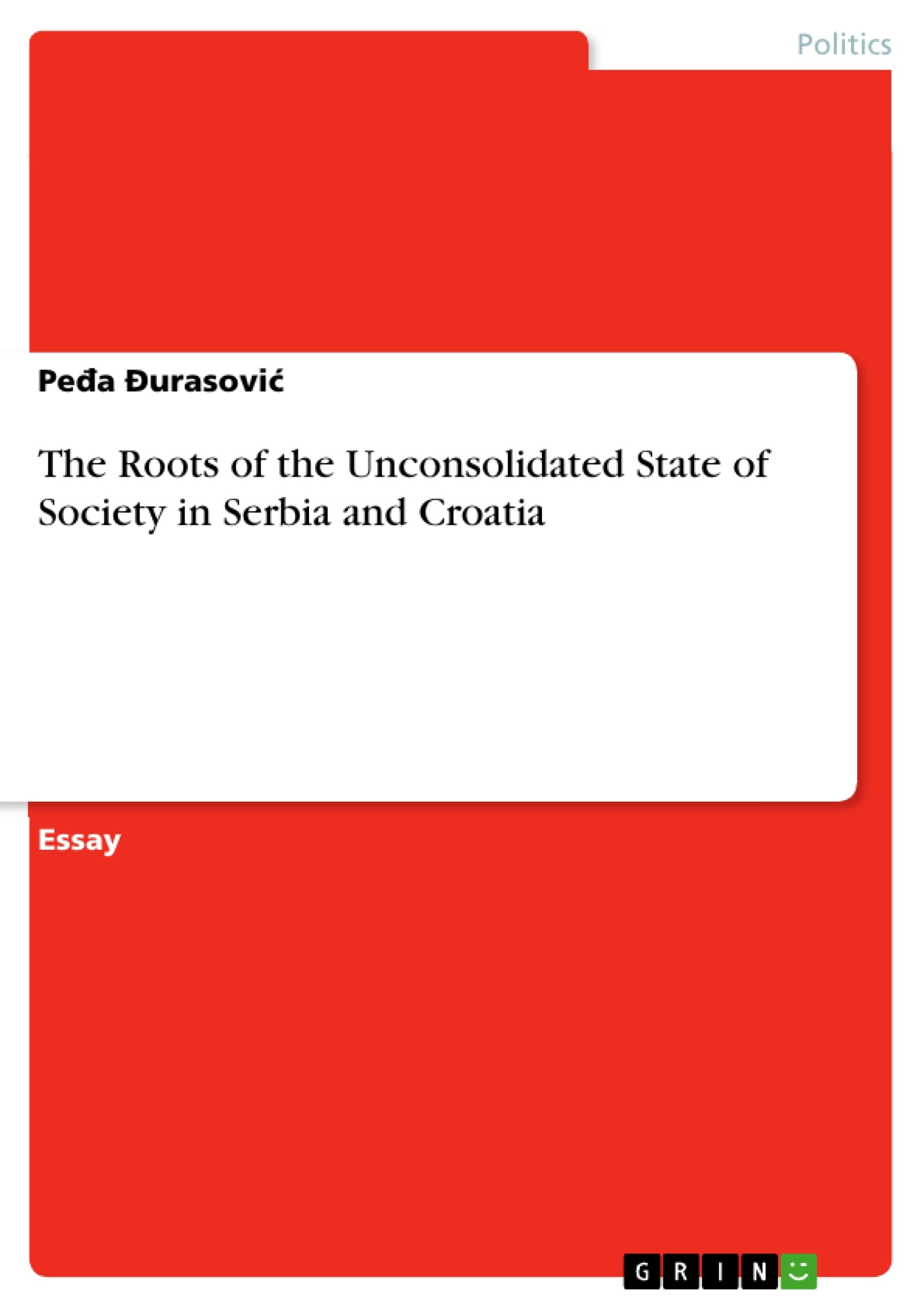This paper aims to analyse the societies in Serbia and Croatia. After Yugoslavia fell apart in the 1990s, its two republics, Croatia and Serbia, continued their paths through the transition process as independent countries. Croatia is already a member state of the European Union, by evaluating the condition of Croatian society it derives that Croatia cannot be considered as a completely consolidated state. On the other hand, Serbia is currently struggling to adopt the societal and state system which would meet the requirements of a fully transformed country. The current position of both countries has largely been defined by Serbian-Croatian mutual relations over the past 25 years.
Socialist Federal Republic of Yugoslavia (Yugoslavia) was, after a few constitutional changes that were conducted in its political history, the last known name of a country which consisted of six republics (Slovenia, Croatia, Bosnia and Herzegovina, Serbia, Montenegro and Macedonia) and two autonomous provinces (Vojvodina and Kosovo) as the constitutional parts of its one republic (Serbia). As regards the constitutional framework, Yugoslavia, after the end of World War II, was constituted as a federation of republics, politically arranged as a one party system (autocratic regime) governed by the Yugoslavian Communist Party. In 1991, at the time when huge changes occurred in Europe and when all the communist regimes in Central and Eastern Europe fell down, the first multiparty elections were held in Yugoslavia after which its two republics Croatia and Slovenia declared their independence from Yugoslavia.
Also, at the time two leading political figures in Yugoslavia, Milošević and Tuđman, the president of the Republic of Serbia and the president of the Republic of Croatia respectively, met each other in the place in Northern Serbia named Karađorđevo and shaked hands for the first time. The second time they shaked hands was in 1995 in Dayton (USA) when the Dayton Peace Agreement was signed which ended the war in Bosnia and Herzegovina.
Inhaltsverzeichnis (Table of Contents)
- Abstract
- Table of contents
- 1 Introduction to the genesis of transition processes in Serbia and Croatia
- The state of Serbia's and Croatia's institutional and social capacity in 1990s
- 2.1 The pillars of the Serbian regime in 1990s
- 2.2 The caracteristics of the Croatian transition during the 90s
- 3 The transitional processes in Croatia and Serbia after 2000th .
- The transitional in(justice) as a root of the newly established mutual relations of misunderstanding between Serbia and Croatia.
- 4.1 The burden of the past never overcome
- 4.2 The unconsolidated bad legacy leads to a bad future
- 5 Bibliography
Zielsetzung und Themenschwerpunkte (Objectives and Key Themes)
The main objective of this work is to analyze the state of society in Serbia and Croatia, particularly focusing on the ongoing transition processes after the fall of Yugoslavia. It examines the complex relationship between the two countries, particularly the legacy of the past and its impact on the present.
- The impact of the Yugoslav transition on Serbia and Croatia
- The legacy of the 1990s wars and their influence on societal structures
- The role of historical grievances and political narratives in shaping relations between Serbia and Croatia
- The challenges of achieving reconciliation and building a consolidated state in both countries
- The potential for future cooperation and integration within the European context
Zusammenfassung der Kapitel (Chapter Summaries)
- Chapter 1: Introduction to the genesis of transition processes in Serbia and Croatia: This chapter introduces the historical context of the transition process in Serbia and Croatia. It traces the origins of the Yugoslav federation and its transformation into a multiparty system. The chapter then outlines the key events leading to the breakup of Yugoslavia, including the declaration of independence by Croatia and Slovenia, and the role of the leaders of Serbia and Croatia, Milošević and Tuđman. It concludes by analyzing the underlying tensions between Serbian and Croatian national identities as a root cause of the war in Croatia.
- Chapter 2: The state of Serbia's and Croatia's institutional and social capacity in 1990s: Chapter 2 delves into the state of institutional and social capacity in Serbia and Croatia in the 1990s. It provides a nuanced analysis of the pillars of the Serbian regime during this period, highlighting its impact on society. It then examines the characteristics of the Croatian transition during the 1990s, including the challenges of building a new democratic system and addressing the legacy of conflict.
- Chapter 3: The transitional processes in Croatia and Serbia after 2000th: Chapter 3 analyzes the transition processes in Croatia and Serbia after the 2000s. This chapter examines the successes and failures of both countries in establishing democratic institutions and addressing the legacy of conflict. It explores the challenges of building a stable and sustainable society while grappling with the lasting impact of the past.
- Chapter 4: The transitional in(justice) as a root of the newly established mutual relations of misunderstanding between Serbia and Croatia: This chapter examines the complex relationship between Serbia and Croatia, highlighting the lasting impact of the past on their mutual relations. It explores the burden of unresolved historical grievances and the lingering mistrust between the two countries. This chapter also examines the role of political narratives and how they have influenced the perception of the past in both countries, often hindering reconciliation and understanding.
Schlüsselwörter (Keywords)
The main keywords and focus topics of this work include the transition process, state consolidation, societal transformation, interethnic relations, national identity, historical grievances, reconciliation, and European integration. It specifically examines the complex relationship between Serbia and Croatia, exploring the legacy of the Yugoslav wars, the challenges of establishing democratic institutions, and the pursuit of a shared future within the European context.
- Citation du texte
- Peđa Đurasović (Auteur), 2017, The Roots of the Unconsolidated State of Society in Serbia and Croatia, Munich, GRIN Verlag, https://www.grin.com/document/505442



